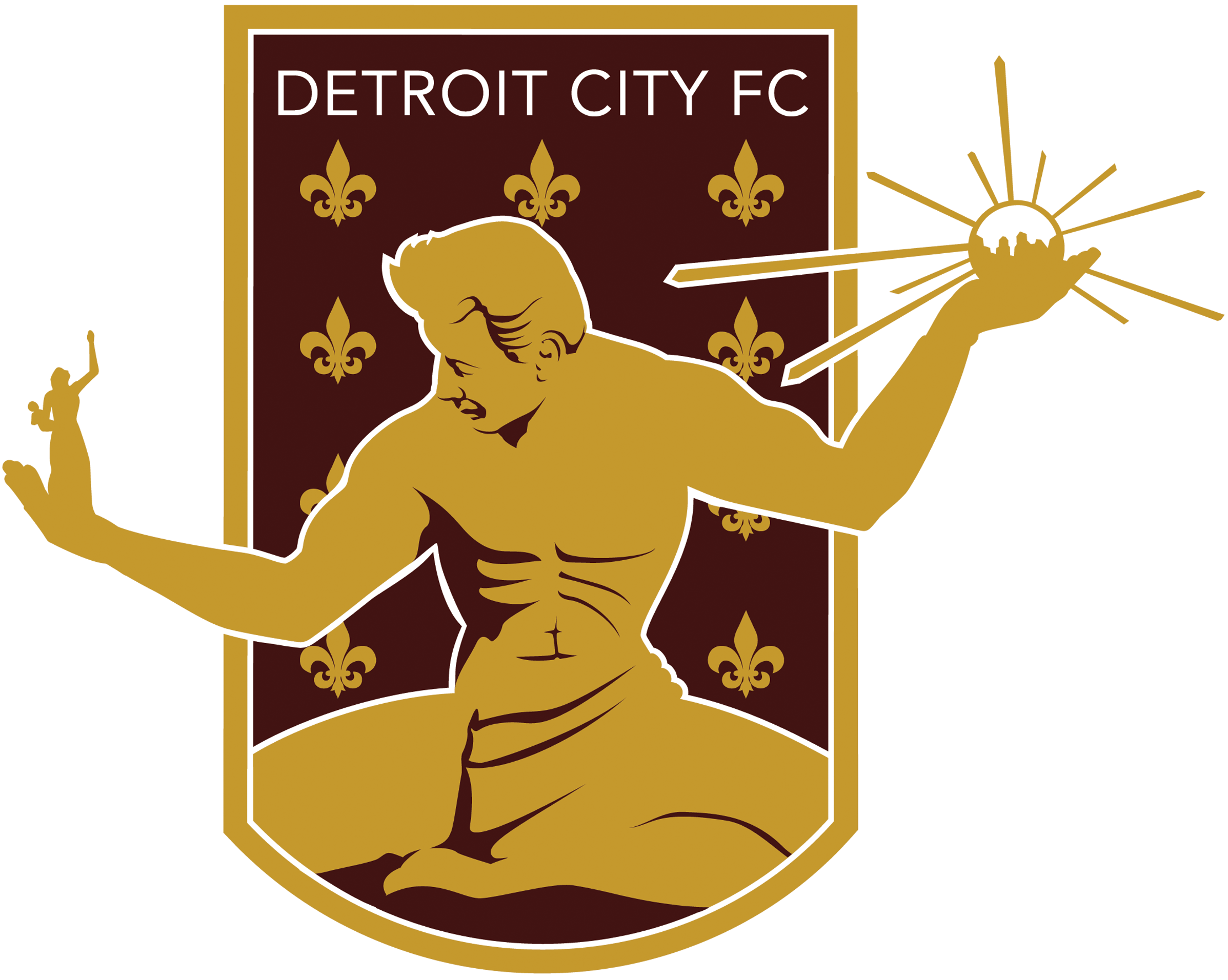Nestled on Detroit’s east side lies Davariz Broaden’s intimate studio—a space brimming with creative energy. The room feels alive, its tight quarters filled with palettes of wet paint scattered across the floor, tables cluttered with bottles of solvent and tubes of pigment, and walls adorned with works in progress. Amidst the controlled chaos, a basketball rests idly—perhaps a source of inspiration or simply a momentary escape. There’s a comfort to the space, reminiscent of a room reserved for painting at home.
A native of Detroit’s west side, Davariz discovered painting just four years ago, seeking a creative outlet during the stillness of the pandemic. While studying fashion at Kent State University, he used the unexpected downtime to pivot from fabric to canvas, trading design sketches for brushstrokes and embracing a new artistic journey. His earliest works depicted celebrities he admired, but it wasn’t long before he began creating from his own perspective.
“I started doing fan art—musicians or anything I liked—replicating images but adding my own spin. I’d post them on social media, and people liked them, which was cool. But it ran its course because it was just fan art—I was making what I knew people would like. Then, one day, I picked up two canvases I’d planned to use for screen printing and painted something much more personal. From there, everything changed. It was really about taking a risk.”
Davariz’s upbringing was shaped by joy, close-knit communities, and, as he fondly describes it, tough love. When asked about his childhood on the West Side, he spoke about how growing up with family in close proximity directly influences the images he seeks to convey. He reminisced about summers spent playing basketball at the Adams Butzel Recreation Center and how those experiences shaped his artistic vision.
“I would go there every single day. That was huge for my development—being social, being part of something. And that’s what I try to represent in my work. I was always with friends, always with family. Even on my street, my house was right next to my grandmother’s, my cousin’s, and my granddad’s. My aunt lived across the street, and my cousins lived adjacent to us. There was always a big family presence in my life, and I try to depict that as much as I can.”
A recurring theme in our conversation was the profound influence of sports, particularly in shaping Black boyhood and masculinity. As the youngest of four brothers, Davariz fondly recalled long summer days spent playing pickup basketball—memories that now serve as a cornerstone of his artistic expression. Through his work, he seeks to challenge and redefine prevailing narratives, offering a counterpoint to the negative stereotypes often placed upon Black boys. He captures them in moments of pure elation—joy, hope, happiness, and solace—allowing us to witness the fullness of their experiences. In doing so, he creates a space where the true essence of growing up in Detroit is revealed—one where community is not just present but central, shaping identity, resilience, and self-discovery.
Like many boys from Detroit, Davariz grew up playing football and basketball, but it wasn’t until later in life that he was introduced to the beautiful game. His gateway to soccer came through the global influence of French football star Kylian Mbappé—a testament to how the sport serves as a bridge, connecting Black communities across the world to the broader diaspora.
Reflecting on my own experience kicking around a tennis ball with French Guinean migrants during a trip to New York City—where language barriers faded in the presence of the game, allowing us to connect effortlessly for over an hour—Davariz shared his thoughts on the unifying power of football.
“I think that’s the beauty of sports in general. There’s a universal language, whether or not you actually speak the same one. You don’t get that kind of connection in any other industry. That’s why, in my work, I always find myself coming back to sports.”
The piece that best embodies Davariz’s understanding of soccer’s impact on Black diasporic communities is Go Getter/Goal Getter (2024). The painting captures seven Black boys on a pitch—one with a ball tucked under his arm, his squinting eyes locking directly with the viewer. Beside him, another boy rests his foot atop the ball, while a third appears to be juggling, keeping it aloft with his chest. The remaining boys fill the scene—some sitting together, lost in conversation, while others gaze into the distance, contemplating what comes next.
What stands out most is their mismatched shirts—despite the lack of uniformity, there’s no mistaking that they are a team, bonded by the game they love and the community that raised them. When asked about his mindset while creating this piece, Davariz reflected on the significance of naming his works and the ways in which sports metaphors extend beyond the field, resonating in everyday life.
“My titles are often a play on words, but they connect to real life—about achieving whatever goal you set. That’s why sports are such a strong reference. Every sport has a goal in mind, and in life, we all share that drive for success or happiness. A lot of my work comes from a series called By Any Means—the idea of doing whatever it takes to reach that goal.”
When discussing his artistic influences, Davariz named Henry Taylor as his favorite artist—not just for his work, but for the spirit behind it.
“My favorite artist is Henry Taylor, not just because of his work but because of who he is—he’s a people person, full of joy. If you met him, he’d probably be the light of your day. That’s what I want my work to do—to depict moments of pure joy. His pieces, even the political ones, are intimate and striking. That’s what I gravitate toward.”
One of Taylor’s quotes seems particularly reflective of Davariz’s approach:
“The end result is not a mere idealized image, but a complete narrative of a person and their history. It’s about respect, because I respect these people. It’s a two-dimensional surface, but they are really three-dimensional beings.”
“That’s so important to me,” Davariz said. “Because I know the work that goes into getting to the finished product. For me, I’ve learned that process is everything—sometimes even more important than the end result.”
As I mentioned earlier, stepping into Davariz’s studio felt like entering someone’s home—warm, welcoming, and full of life. Sunlight poured through the windows, but the true brightness of the space seemed to emanate from its owner. His works, both completed and in progress, were scattered throughout the room, each one a testament to Blackness, community, and joy—deeply rooted in his experiences growing up in Detroit.
The space carried a certain chaos, though not in the sense of disorder, but of motion—an energy that spoke to the intensity of his creative process. A true representation of his commitment to the work at hand.
Detroit is changing—but what role does art play in that? When Davariz and I were growing up, the city looked very different, a reflection of the systemic racism still at work today. Gentrification has displaced longtime Black and Brown residents as wealthier, often white newcomers bring new developments, corporate businesses, and increased police presence, reshaping the city’s landscape. The commercialization of art has played a significant role in Detroit’s so-called “renaissance,” attracting new audiences while capitalizing on spaces that were long neglected.
I challenged Davariz on what he believes the artist’s role is in keeping Black Detroit’s narratives centered, especially as the city continues to change.
“The role of the artist is just to continue to create. That’s our voice. As long as we keep making work, we drive conversation. These pieces are meant to spark dialogue and evoke feeling. That’s our responsibility—just to keep creating.”
I agreed—art is a means of saying what needs to be said. But both Davariz and I believe that real impact comes not just from creating but from giving back. So I pressed him further: What more could he do to ensure his work has the impact he envisions?
“Visibility is the most important thing,” he said. “The community can’t engage with work they don’t see. So it’s about having the confidence to put your work out there, to create spaces where people can experience it. But I also want to find ways to involve people more.”
We ended our conversation on a hopeful note, imagining ways Davariz could contribute to programs within Detroit Public Schools. How powerful it would be to see Black children across the city not only learning the language of the beautiful game but also discovering the arts—a true testament to soccer’s ability to inspire, connect, and build community.
Conversation with Davariz Broaden
Interviewed by Maxwell Murray




















































































































































































































































































































